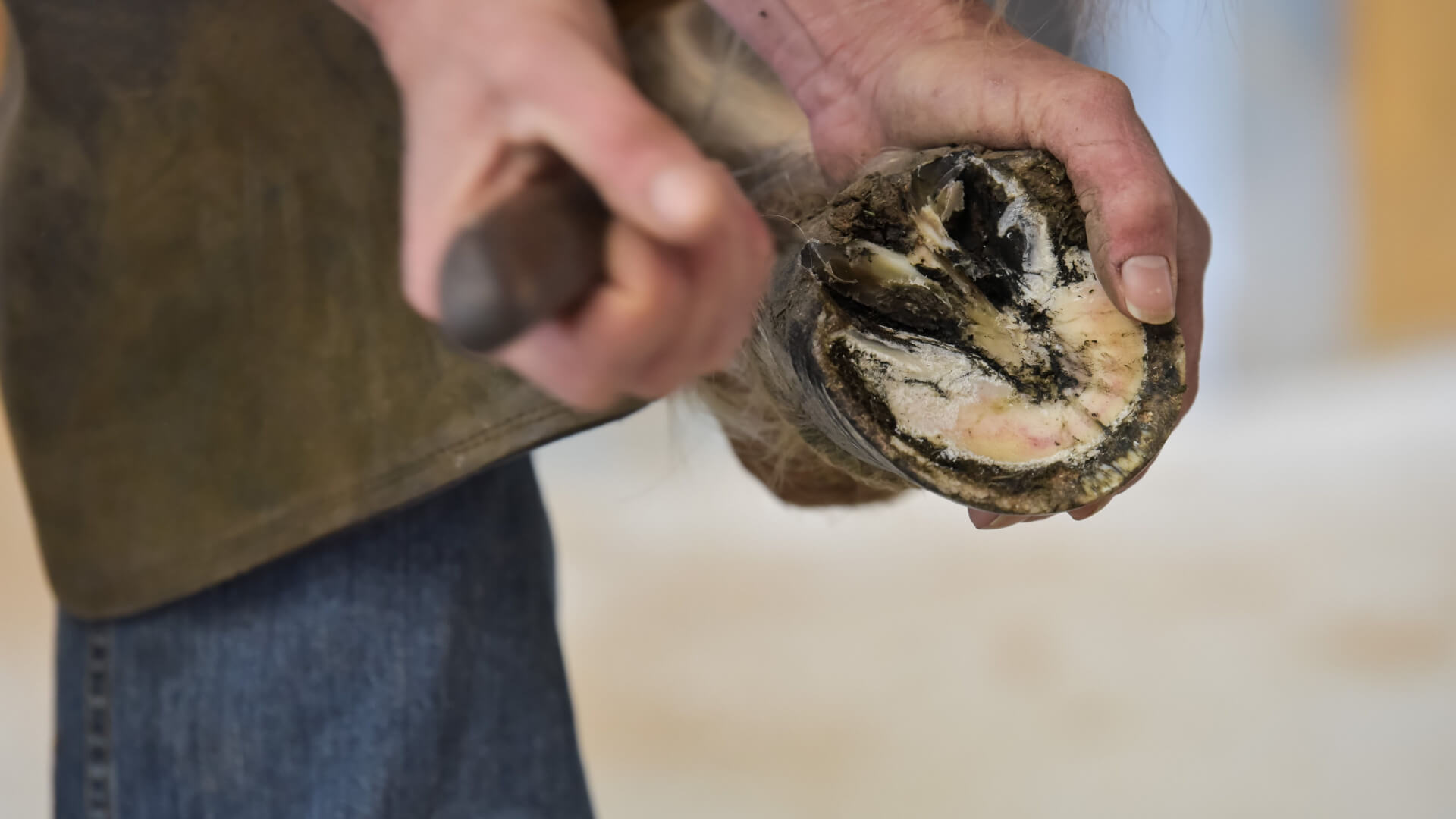May 24, 2024
Everything a Horse Owner Needs to Know About a Foundered Horse
Laminitis is a debilitating condition that commonly affects horses. It is characterized by inflammation of the laminae—the tissue connecting the hoof wall to the pedal bone. When left untreated, this condition can progress to founder, a severe form of laminitis that leads to the rotation or sinking of the horse’s pedal bone.
Understanding the causes, signs, and treatments for a foundered horse is crucial for horse owners and equine enthusiasts dedicated to maintaining their horses’ health.
What is a Foundered Horse?
This condition is excruciatingly painful for the horse and requires immediate attention to prevent further damage. Founder can be triggered by various factors, including overfeeding, abrupt changes in diet, excessive weight, and prolonged exposure to hard surfaces.
Understanding the Signs and Symptoms of a Foundered Horse
Recognizing the symptoms of a foundered horse early can make a significant difference in treatment outcomes. Common signs include:
- Reluctance to move or stand at all
- Shifting weight from one hoof to another
- Increased digital pulse
- Heat in the hooves
- Visible changes in the shape or structure of your horse’s hoof
Early detection is crucial. If you notice any of these symptoms, contact your veterinarian immediately to begin the appropriate treatment.
Immediate First Aid and Care for a Foundered Horse
If you think your horse’s hoof may be showing signs of being foundered, immediate action is essential. Here are the steps to take:
- Remove the Horse from Hard Surfaces: Move your horse to a soft, supportive surface to alleviate pressure on its hooves.
- Administer Anti-Inflammatory Medication: Under veterinary guidance, provide anti-inflammatory drugs to reduce pain and swelling.
- Cold Therapy: Applying cold packs to the affected hooves can help reduce inflammation.
- Restrict Food Intake: Remove grain and limit access to lush pasture to prevent further metabolic stress.
Risks of Untreated Laminitis
Ignoring laminitis can lead to severe, long-term consequences for a horse. If the condition is not managed promptly, the progression from laminitis to founder constitutes a significant risk. Untreated laminitis can result in the complete detachment of the laminae, leading to the loss of support for the pedal bone.
This often causes the pedal bone to rotate or sink, leading to chronic pain and potentially irreversible damage. In severe cases, untreated laminitis can lead to euthanasia to alleviate the animal’s suffering.
Additionally, a compromised hoof structure can lead to secondary infections and abscesses. This will further complicate the horse’s recovery, lessening its chances of recovery. Timely diagnosis and intervention are vital to prevent these detrimental outcomes and ensure the horse’s quality of life is maintained.
Long-Term Management and Recovery Strategies
Long-term care for a foundered horse involves a combination of environmental management, dietary adjustments, and therapeutic interventions:
- Corrective Shoeing: Specialized shoeing techniques can support hoof structures and promote healing.
- Nutritional Management: A balanced diet low in non-structural carbohydrates (NSCs) is essential.
- Controlled Exercise: Gradually reintroducing exercise can help improve circulation and strengthen the horse’s hooves.
- Gladiator Equine’s Healing Products: Our healing devices can support the horse’s body’s natural healing ability. This will improve their ability to recover or avoid their hoof foundering altogether. If their hoof has already foundered, it can help keep your horse comfortable as it heals.
The Role of Gladiator Equine’s SemiCera® Technology in Supporting Recovery
Gladiator Equine’s SemiCera® Technology represents a breakthrough in equine health, targeting recovery at the cellular level. This innovative technology supports and optimizes the body’s natural repair processes, leading to a more substantial and lasting recovery.
By enhancing cellular function, the SemiCera® therapy aids in reducing inflammation and promoting tissue regeneration, which is essential for horses recovering from laminitis and founder.
Preventative Measures to Protect Your Horse from Laminitis
Prevention is always better than a cure. Here are some measures to minimize the risk of laminitis:
- Maintain a Balanced Diet: Avoid sudden dietary changes and monitor your horse’s weight.
- Regular Hoof Care: Ensure routine farrier and veterinary visits and promptly address any hoof issues.
- Monitor Grazing: Limit access to lush pastures, especially during high-risk periods such as spring.
- Exercise: Regular physical activity helps maintain a healthy metabolism and weight.
By following these measures, you can significantly reduce the risk of your horse developing laminitis and founder.
Contact Gladiator Equine For More Information
For more insight on how Gladiator Equine’s SemiCera® Technology can help your horse recover from its founder or to learn more about our equine health solutions, turn to Gladiator Equine. Our team of experts is here to assist you every step of the way. Contact us today.


